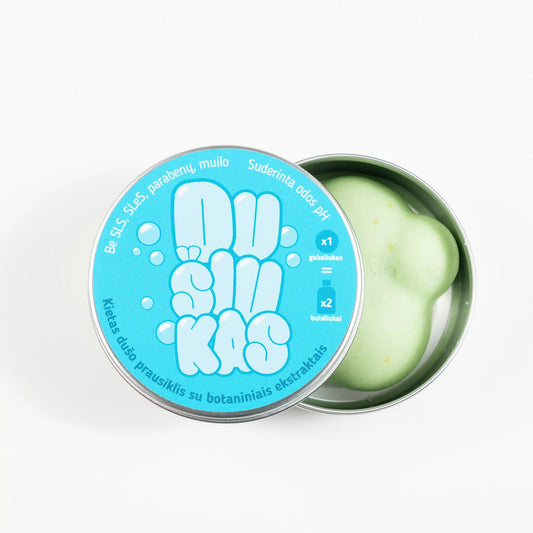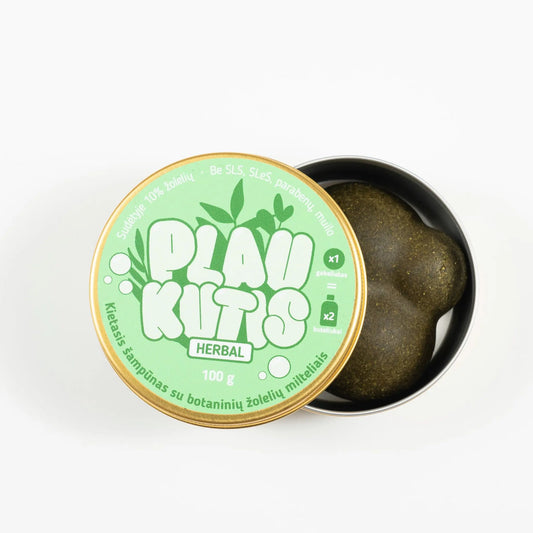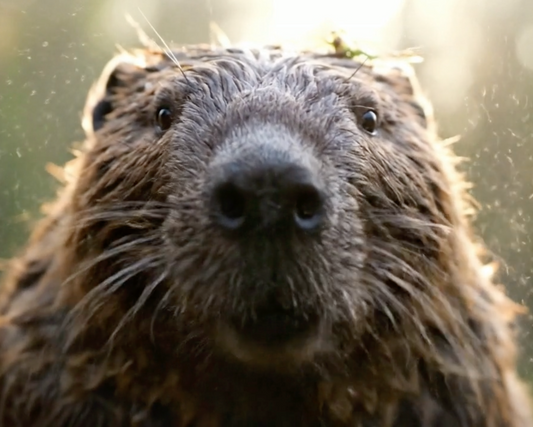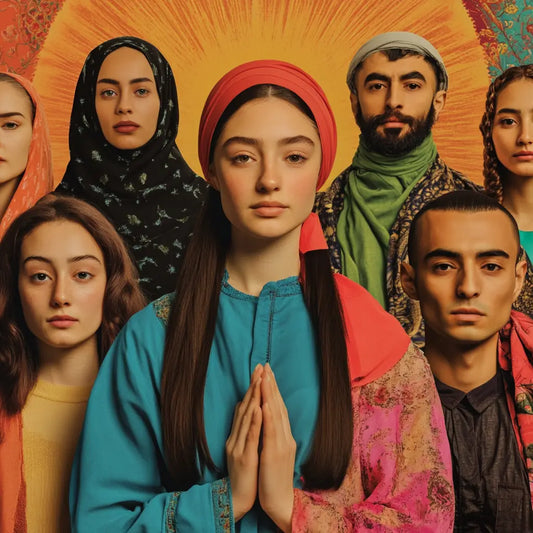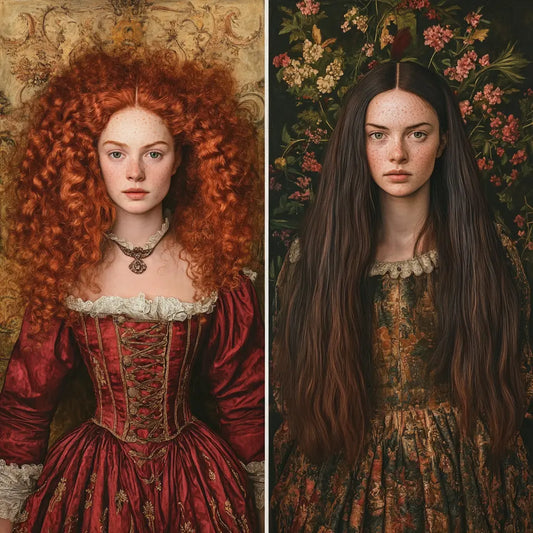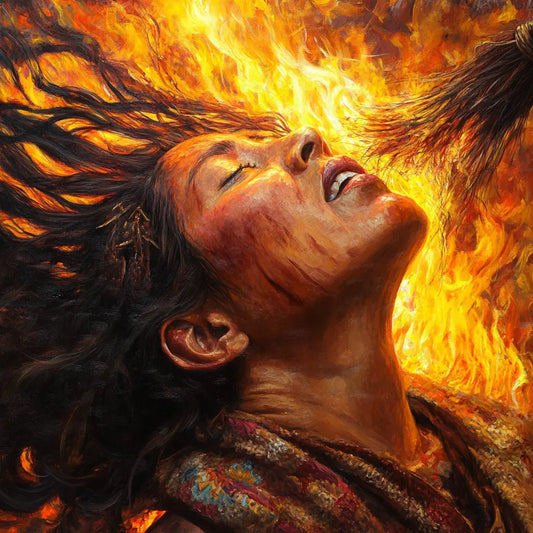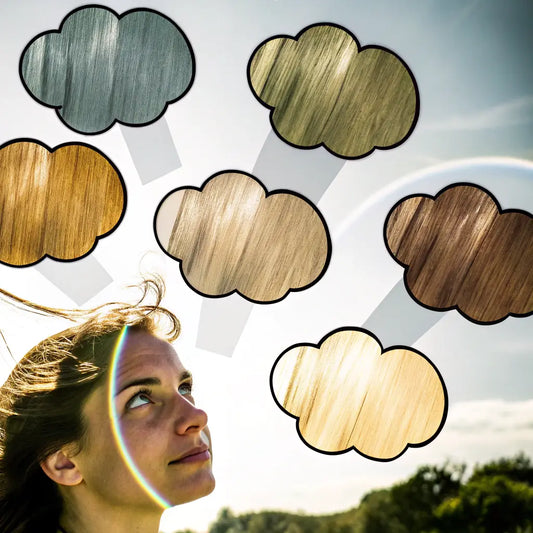Hair color is not only a genetic trait, but also an interesting reflection of geography, culture, and human history. The world's population is a mosaic of different hair colors, from the blond shades of Scandinavians to the deep black shades of Asian hair. What accounts for this diversity? The answer lies in a complex interplay of genetics, environment, and cultural factors. In this article, we'll explore regional differences in hair color, uncover surprising facts, and share little-known cultural stories about hair color around the world.
Hair colors in Europe: a cauldron of color diversity
Hair color diversity in Europe
Europe has one of the widest ranges of natural hair colors, from the lightest blondes to dark brunettes and fiery redheads. This diversity is due to the genetic diversity that has evolved in Europe over centuries. In Northern Europe, especially Scandinavia and the Baltic countries, blondes are common, while red hair is most commonly found in the British Isles.

Blonde hair in Northern Europe
Blonde hair is most commonly found in Northern Europe, especially in Sweden, Norway, and Finland. This hair color is due to low levels of eumelanin , the pigment responsible for darker hair colors. Historically, it is thought that the abundance of blondes in the north may have evolved as an adaptation to the region's low levels of UV radiation, allowing people to better synthesize vitamin D.

- Unexpected statistic : In Finland, about 80% of the population has blond hair, making it one of the largest concentrations of blondes in the world.
Red hair in the British Isles
Red hair, caused by high levels of pheomelanin , is the rarest natural hair color in the world, with less than 2% of the population having it. However, in the British Isles, especially Scotland and Ireland, red hair is much more common. The MC1R gene , which causes red hair, is recessive, so both parents must carry it for their child to inherit the color.

- Cultural Insight : In Scottish folklore, red hair was both revered and feared. In the past, redheads were believed to be witches or possessed supernatural powers. Today, about 13% of Scots have red hair, and more than 40% carry the gene.
Brown and dark hair in Southern Europe
In southern Europe, in countries such as Spain, Italy and Greece, brown and dark hair is dominant. This is due to higher levels of eumelanin, which gives the rich, dark shades characteristic of Mediterranean populations. It is believed that darker hair evolved as an adaptation to the more intense solar radiation in these regions, providing better protection from UV rays.

- Fun fact : Southern Europe has a wide variety of hair textures and colors due to centuries of migration and cultural mixing. For example, the Moors brought African and Middle Eastern genes to Spain, which influenced the diversity of hair colors and textures in the region.
Hair colors in Asia and the Middle East: shades of black and dark brown
Black hair in Asia
In East Asia, Southeast Asia, and South Asia, black hair is the most common hair color. The dark, shiny black hair in these regions is due to high levels of eumelanin, which gives the hair its intense color and often silky texture. While black hair is dominant, there are subtle variations in shade, with some people having very dark brown or chestnut hair shades.

- Unexpected statistic : More than 90% of the world's population has black or very dark brown hair, and Asia contributes a large portion of this number.
Hair Colors in the Middle East and Central Asia
Black and dark brown hair is dominant in the Middle East and Central Asia, but there is more variation in this region than one might think. In countries like Iran, Afghanistan, and parts of Turkey, shades ranging from dark brown to black can be found, with the occasional lighter shade. This variation is often the result of centuries of migration and intermarriage between different populations.

- Historical insight : The Silk Road , which connected East Asia to Europe, played a significant role in the genetic mixing of populations. This ancient trade route helped spread the genes responsible for lighter hair to regions where dark hair was traditionally dominant.
Cultural practices that influence hair color
In many Asian and Middle Eastern cultures, natural hair colors are often enhanced or altered through traditional means. Henna , for example, has been used throughout the Middle East and South Asia for thousands of years to give hair a reddish-brown hue. Cleopatra herself is believed to have used henna to dye her hair.

- Fun fact : Hair coloring is an important beauty practice in Iran – nearly 80% of Iranian women dye their hair, often using natural dyes such as henna.
Hair colors in Africa and America: a mix of genetic heritages
Black hair in sub-Saharan Africa
In sub-Saharan Africa, black hair is the most common natural color, but hair texture and curl patterns vary greatly. African hair is often characterized by strong curls, also known as kinky or spiral curls (hair type 4). This texture is thought to have evolved as an adaptation to hot climates, protecting the scalp from intense sunlight and allowing for better heat dissipation.

- Unexpected statistic : Nearly 80-90% of sub-Saharan Africans have type 4 hair, which is characterized by dense, tight curls.
Hair color diversity in America
The Americas, especially North and South America, have one of the widest ranges of hair colors, due to centuries of migration and genetic mixing. Native Americans typically had black or very dark brown hair, but the arrival of European colonists and African slaves brought new genetic variations. Today, all hair colors can be found in America, from blonde to red, brown to black.

- Unexpected statistic : Brazil is one of the most genetically mixed countries in the world, with over 43% of the population being of mixed race, resulting in an extremely diverse palette of hair colors – from black to light brown, blonde and even redheads.

Indigenous hair colors and migration
Black hair is prevalent among the indigenous peoples of North and South America, but genetic admixture has introduced some variation. For example, lighter brown hair can be found in some areas of the Andes due to long-term contact with European colonists.

- Cultural Insight : Many North American Indian tribes have strong cultural ties to hair, seeing it as a symbol of strength, spiritual power, and identity. For example, the Lakota tribe believes that long, uncut hair connects them to their ancestors and the spirit world.
Myth or Fact: Interesting Facts About Regional Hair Colors
Let's debunk some myths and share some unexpected facts about hair colors around the world:
-
Myth 1 : Blonde hair color is only found in Europe.
- Fact : While blondes are more common in Northern Europe, naturally blond hair is also found in Melanesians among the Solomon Islanders, despite their dark skin. This is due to a genetic mutation unrelated to European heritage.
- Fun fact : Approximately 1-2% of the world's population has red hair. While red hair is most commonly associated with Celtic regions, redheads are also found in Russia and Eastern Europe, where the MC1R gene is widespread.
-
Myth 2 : All Asians have the same hair color.
- Truth : While black hair is dominant, there are subtle variations, especially in Central and South Asia, where some populations have dark brown or even lighter hair due to historical genetic admixture with Europeans and Middle Easterners.
- Interesting fact : Russian Udmurtia has the highest concentration of redheads outside the British Isles, where up to 10% of the population has red hair.
-
Myth 3 : All Africans have the same hair texture.
- Truth : African hair is extremely diverse, with different curl patterns, density, and texture. Some populations, especially in East Africa, have looser curls, while others have extremely tight spiral curls.

Practical tips for caring for different hair colors
Keeping your hair color vibrant and healthy requires special care tailored to your hair color and texture. Here are some tips for women with different hair colors:
- Blonde hair : Use a purple shampoo to neutralize yellow tones and maintain cool undertones.
- Red hair : Red hair fades faster than other colors, so use color-protecting shampoos and avoid excessive sun exposure.
- Black hair : Use deep conditioners regularly to maintain shine and moisture, as black hair can look dull if it doesn't get enough moisture.
- Gray hair : Use a color-enhancing shampoo to keep gray hair bright and prevent yellowing.

FAQ about regional hair colors
Q: Why is blonde hair the most common color in Northern Europe?
- A: Blonde hair is more common in Northern Europe due to lower levels of sunlight, which may have driven the evolution of lighter skin and hair for better vitamin D synthesis.
Q: Can people from regions where black hair is dominant have children with lighter hair?
- A: Yes, if both parents have the recessive gene responsible for lighter hair, they can have children with blonde or light brown hair, even if they themselves have dark hair.
Q: Is red hair really the rarest hair color?
- A: Yes, red hair is the rarest natural hair color, found in less than 2% of the world's population. It is most common among people of Celtic descent.
Q: Does climate affect hair color?
- A: Climate and UV radiation have influenced the evolution of hair color. Darker hair is more common in regions with higher UV radiation, while lighter hair has evolved in regions with less sun.
Q: How does migration affect the diversity of hair colors?
- A: Migration brings new genetic combinations, resulting in a wider range of hair colors in different regions. This is especially noticeable in the Americas, where European, African, and indigenous genes have mixed.

Conclusion: Cultural and Geographical Influences on Hair Color
The global diversity of hair colors reflects the complex interplay of genetics, geography, and culture. From the blond Scandinavians to the deep black hair of Asia and Africa, each region has its own story of hair color evolution. Migration, intermarriage, and historical factors have shaped the hair color trends we see today. By understanding these influences, we can appreciate the diversity of hair colors around the world.

